Exploring the top landmarks in Vietnam is an extremely rewarding experience. How Come? Because Vietnam itself is an extremely rewarding destination.
Blending the mystics of the orient with stone-cold soviet socialism, unique and diverse natural sites, and decades of French influence, Vietnam is one of the most exciting mixes in Southeast Asia.
From the giant hands of a mountain God to the largest cave in the world, prepare for one of the most exotics journeys imaginable because these are the 20 most impressive Vietnam landmarks:
Ha Long Bay

We start the top landmarks in Vietnam with one of the world’s most famous natural sites and the country’s most prominent attraction – Ha Long Bay.
Formed by more than 1,600 limestone islands and islets, the famous bay is estimated to be more than 20 million years old.
According to the local legend, Ha Long Bay came to be when a dragon, sent by the gods to protect Vietnam, dropped jewels from its mouth (the jewels became islands) to blockade invading enemy forces. The name Halong Bay literally translates to ‘where the dragon descends into the sea‘.
If you ever visit Ha Long Bay, make sure to check not only the beaches but also the caves and grottos in the area. Pick up the cruise best suited to your needs (here’s how to find it) and explore Thien Cung Grotto (Heavenly Cave), the Hospital Cave, and the other popular Halong caverns.
Ho Chi Min Mausoleum
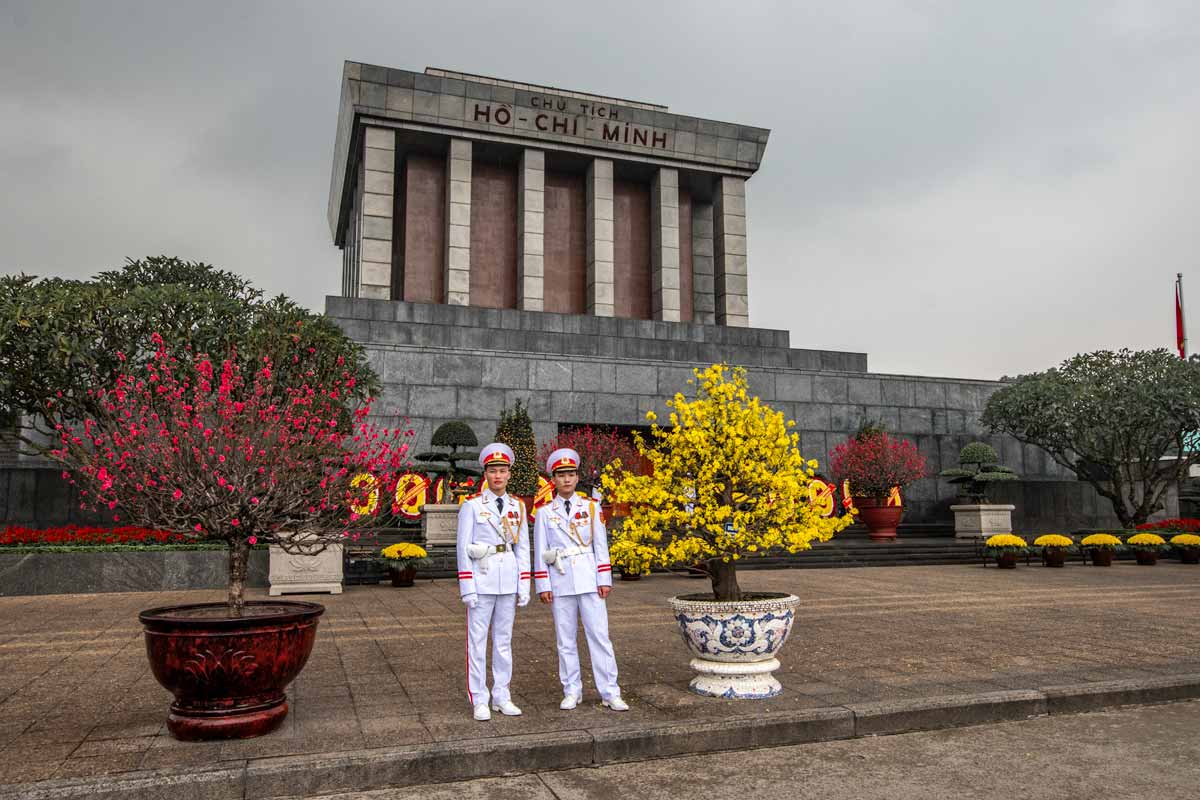
Located in the capital – Hanoi, the Ho Chi Min Mausoleum is a peculiar attraction that very few other countries can offer. As you can guess from the name, the mausoleum holds the mummified body of Ho Chi Min, the first president of the Socialist Republic of Vietnam, also known as the father of the country.
Situated on the grand Ba Dinh Square, Ho Chi Min Мauselum is guarded 24/7, and if you want to go inside and see the father of Vietnam with your eyes, you better be wearing a polite and serious attire and be ready to wait on a hefty line.
Train Street

In the age of Instagram, this unusual Hanoi street has converted from one of the worst in the city to one of the biggest landmarks in Vietnam. But what exactly is the train street? It’s what it sounds like, a street where a train passes through.
This alley owns its fame due to the distance between the train and the buildings, or more like the absence of it. Yes, the train goes right in between the houses making the whole lane an incredibly eccentric sight, perfect for photos.
Psst! The train street is just one of the top 10 weird things in Hanoi. Check the other nine.
Old Quarter in Hanoi
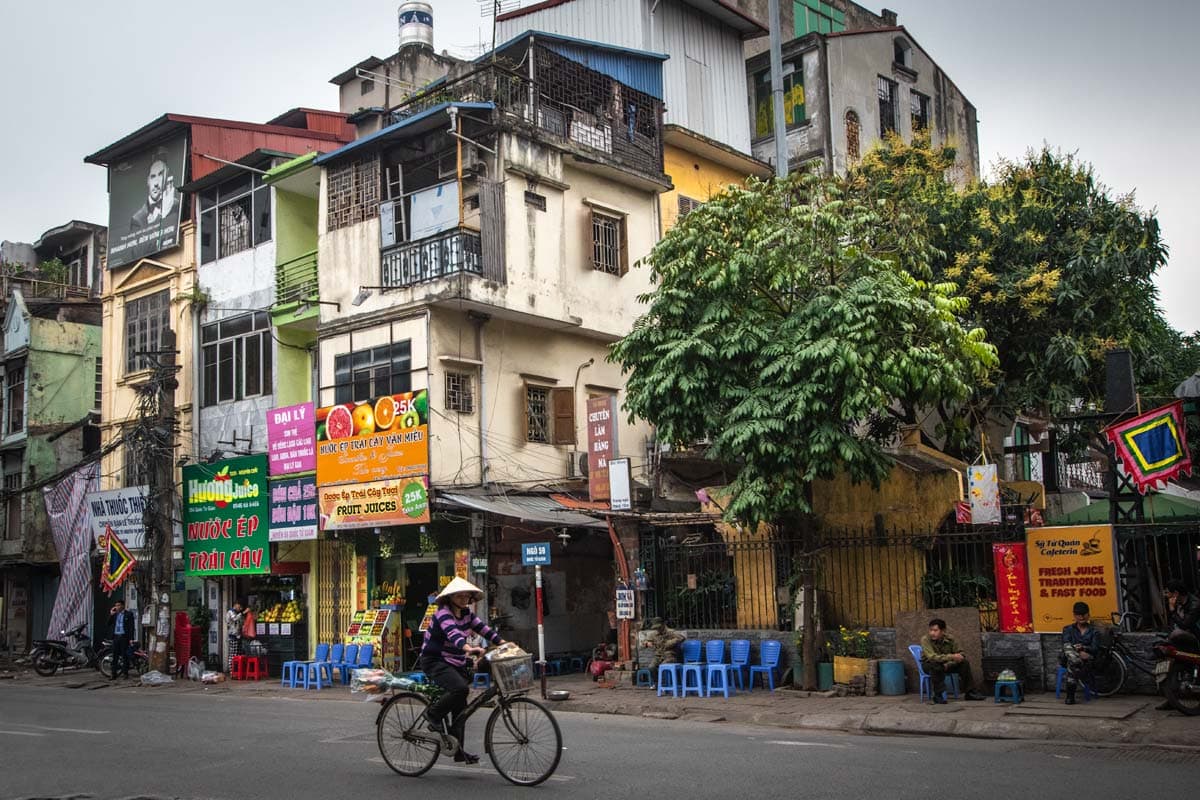
The Old Quarter or Phố cổ Hà Nội is the name of the historical core of Vietnam’s capital. Populated during the Lý and Trần dynasties, the Old Quarter is the most touristic Hanoi area and houses plenty of historical attractions such as temples, pagodas, and even several city gates.
The old quarter is known among the locals as the 36 streets. The name derives from the fact that 36 guild alleys used to make up this part of the city. All sorts of artisans from villages around the capital gathered on their specific streets, selling various products to the merchants.
Each street bears the name of their particular guild, and even today you can find Hàng Tre (bamboo wares street), Hàng Đồng (“copper wares street”), and Hàng Buồm (sails street).
See Also: Top 20 Biggest Landmarks in Asia
Sapa Terraces
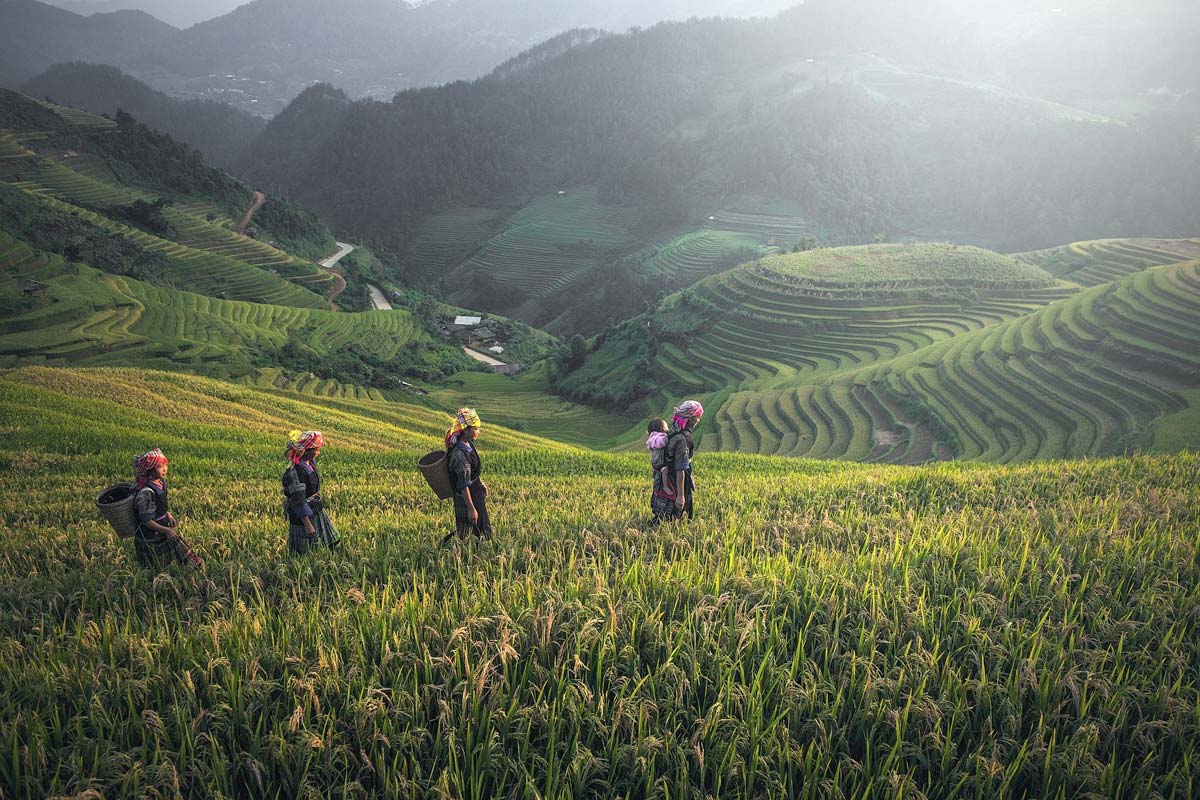
The terrace rice fields in Sapa are not only among the most popular Vietnam landmarks but are also one of the top photo destinations in the country. Trust me, the extraterrestrial landscape made by the terraces is on top of every travel photographer’s list.
If you don’t fancy your photo skills, don’t worry. The constant flow of tourists made the local people offer a wide variety of activities and tours. You can go trekking, explore via bike, visit small ethnic villages, learn the Tay, Dao, and Hmong tribes’ traditions and cultures, or check out the 196 bizarre ancient carvings.
Mai Chau Valley

Situated just 3 hours away from the capital, in the picturesque Hoa Binh province, Mai Chau Valley is one of the most trendy day-trips to do from Hanoi. Famous for its rice terraces, the 27-mile valley is also known as one of Vietnam’s very best biking sites.
And to turn all this tranquil nature into the perfect experience, the Hoa Binh’s locals are descendants of Thai people who emigrated to Vietnam around 1500 years ago. They are prominent for their kindness and hospitality and are ready to go above and beyond to make your trip a memorable one.
Golden Bridge
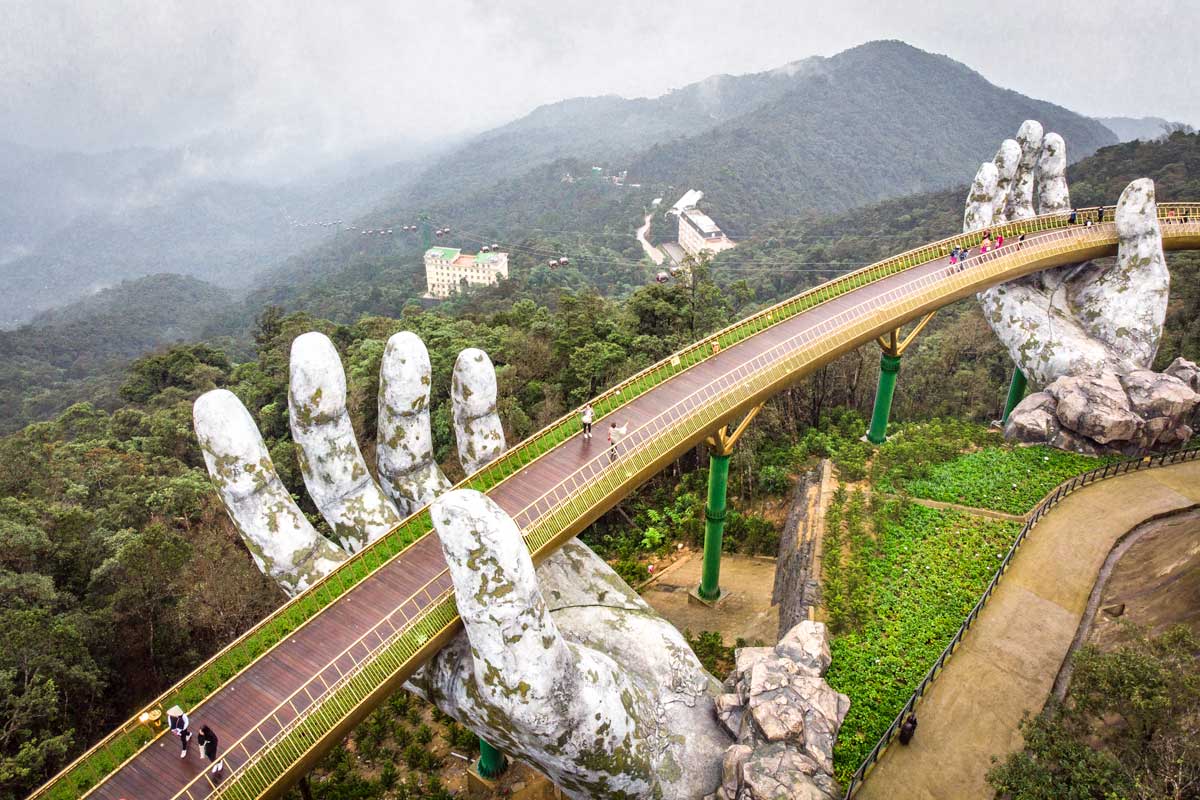
The Golden Bridge of Ba Na Hills is one of the newest landmarks in Vietnam. Perched on a lush mountain, overlooking the nearby Da Nang city, the bridge is actually part of… an amusement park.
Yes, Ba Na Hills is, in fact, an amusement park with plenty of attractions, including a french village, a Japanese pagoda, a giant Buddha, and the above-mentioned Golden Bridge.
The two giant hands that hold the bridge represent the hands of the God of The Mountain, who supports the villages to get to the Thien Thai garden.
Hoi An Village

Formerly known as Fai-Fo, the historic town of Hội An is one of the most picturesque little towns in entire Southeast Asia. Seriously, just take a walk around its tiny yellow alleys, and you are guaranteed to stumble upon at least half a dozen photoshoots.
A UNESCO World Heritage Site since 1999, Hoi An is an exceptionally well-preserved example of a Southeast Asian trading port. Blending marvelously indigenous and foreign influences, Hoi An welcomes more than 3 mln tourists per year, making it one of the most popular attractions in Vietnam.
Ban Gioc Waterfalls
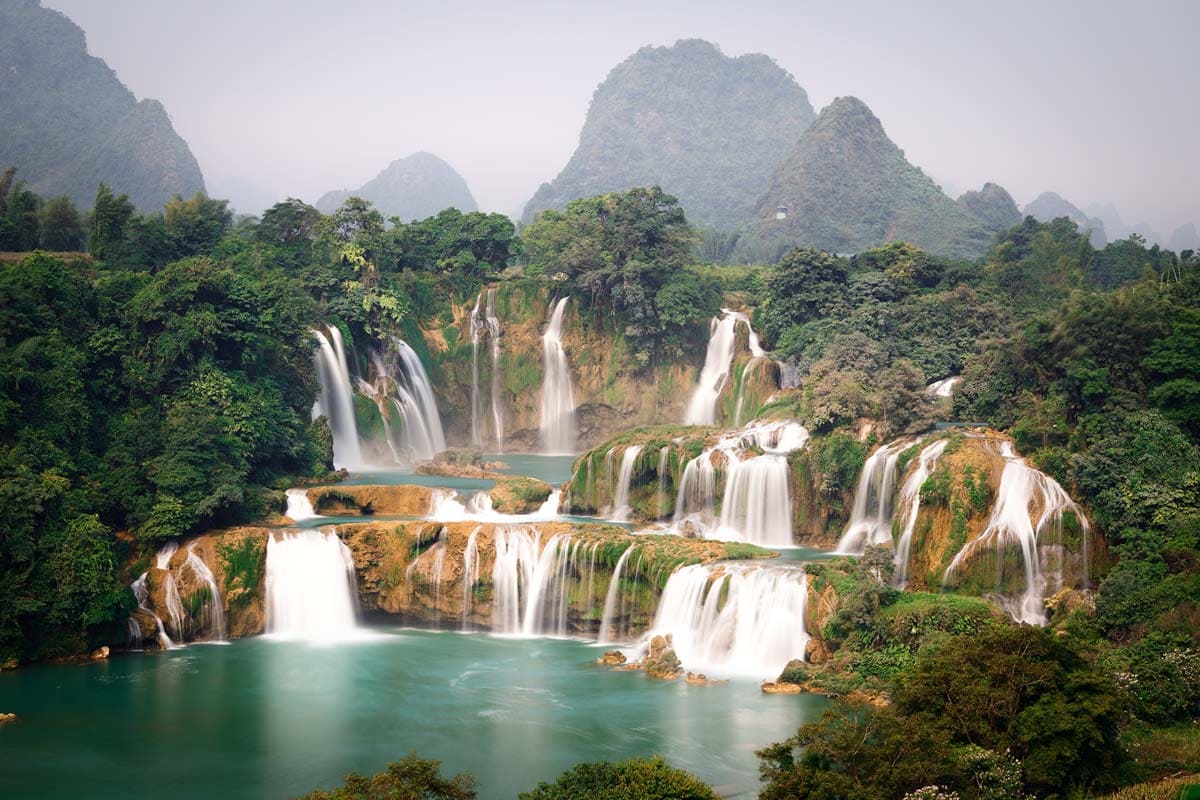
Regularly selected among the most beautiful waterfalls in the world, the Ban Gioc waterfalls are genuinely a fairytale sight. Located in the district of Trung Khanh right on the Chinese border, the waterfalls cascade through 3 different layers, all of them forming azure natural pools.
To get the best of Ban Gioc, you need to board a bamboo raft and navigate to the middle of the Quay Son River.
Being over 200 meters (656 f.) wide and with a drop of more than 70 meters (229 ft.). Ban Gioc is the largest waterfall in Asia and something you should definitely have on your Southeast Aisa bucket list.
Imperial City in Hue
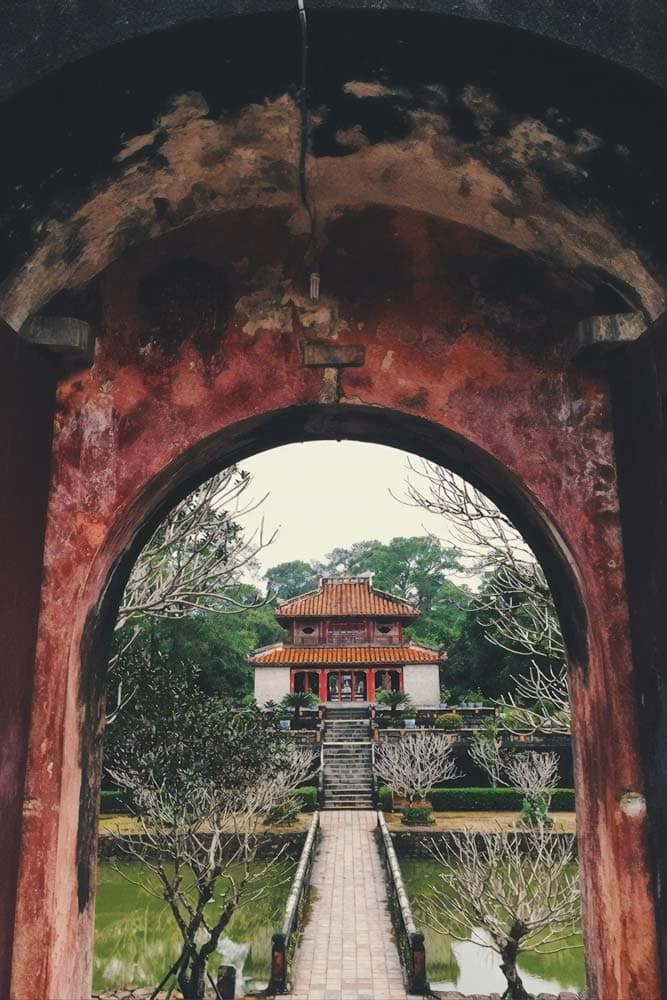
A UNESCO World Heritage Site since 1993, the Imperial complex in Hue offers a well preserved fortified citadel and an imperial palace, the Purple Forbidden City, inside.
A birthplace of the Nguyen Dynasty, Hue used to be the capital of An Nam country from 1802 to 1945. The citadel was constructed following Emperor Gia Long’s wishes to have a fortress, in the style of Beijing’s Forbidden City, built in Vietnam
Even though many of the structures were heavily damaged during the Vietnam War, you can still enjoy the best of the Gate of Manifest Benevolence, Hall of Supreme Harmony, the Pavilions of Splendour, and the cherry on the top – The Purple Forbidden City.
Son Doong Cave

We continue our top landmarks in Vietnam with a cave. Yes, I know caves are mostly dull, but before you skip to the next attraction, let me tell you something – this cave is not just any cave. Son Doong is the world’s largest cave.
Located in the deep jungles around Quảng Bình, this incredible cave is 3 million years old, 9 km (5 miles) long, it boasts some of the world’s largest stalagmites (70 m/223 ft long and… green) and giant cave pearls (as big as tennis balls). The cave is so enormous that, during the years, it developed its own unique ecosystem! How cool is that?
Cu Chi Tunnels
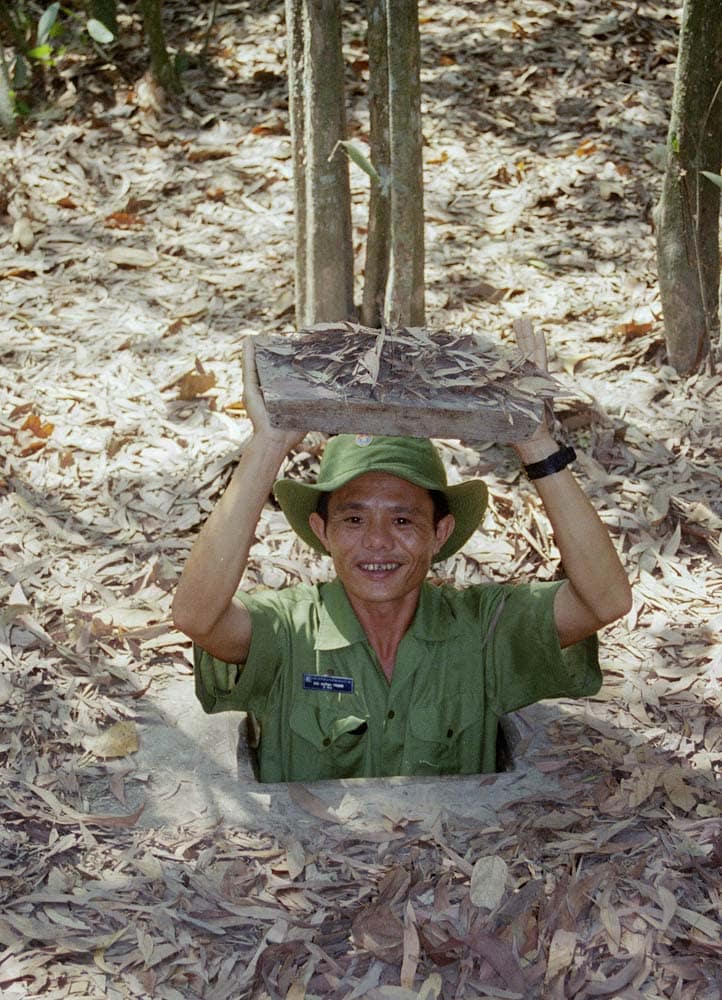
The Immense network of connecting tunnels located in the Củ Chi District of Ho Chi Minh City (Saigon) is a popular tourist attraction and an essential part of Vietnam’s cultural heritage.
Originally built during the war against the French colonialists, the tunnels were later used in the Vietnam War. They are over 120 km (75 miles) long and serve as a very informative war museum.
See Also: Top 15 Famous Landmarks in Indonesia
Phu Quoc Island

Next on the list, we have the idyllic beaches of Phu Quoc Island. Located 45 km (28 miles) west of Ha Tien, the island is one of Vietnam’s most significant tourist destinations and welcomes more than 4 million tourists every year.
Combining all sorts of beach activities with traditional villages, Buddhist pagodas, natural parks (the northern part of the island is a UNESCO World Heritage Site), and renounced food scene, it’s easy to see why both locals and foreigners fancy Phu Quoc as the perfect vacation spot.
Tam Coc Bich Dong
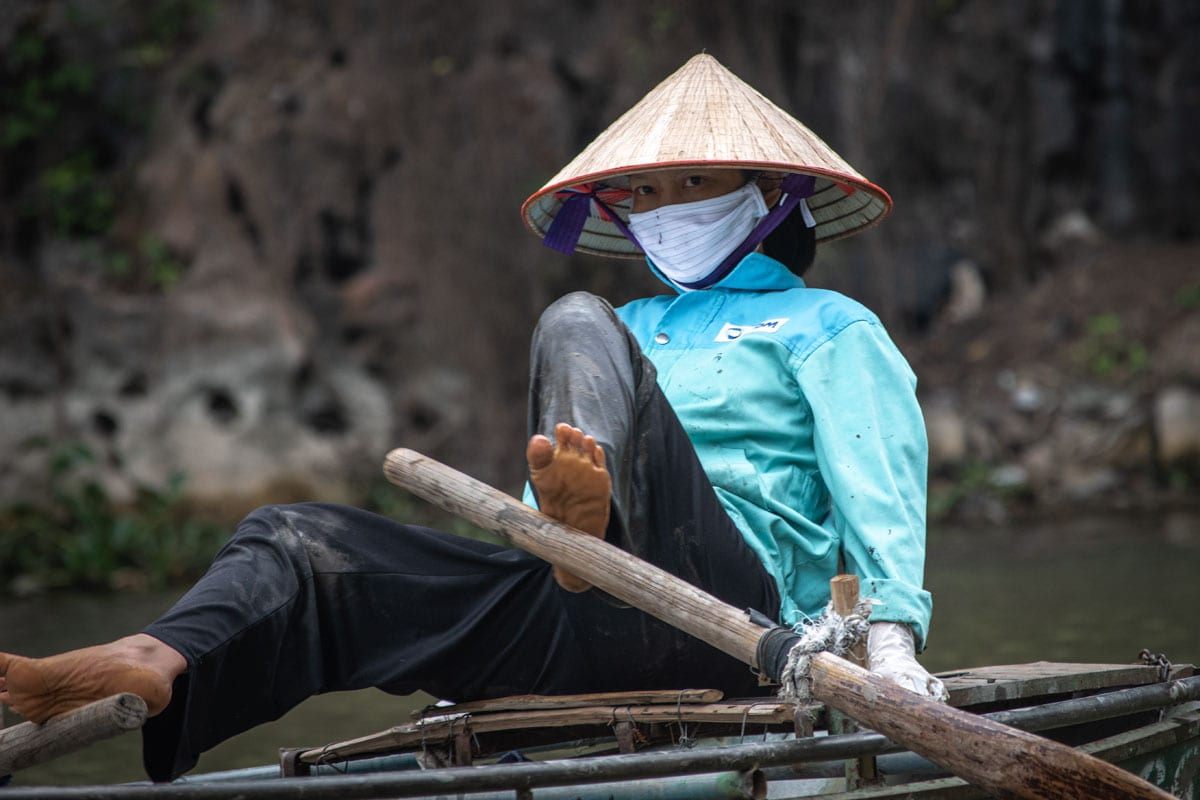
Located in the Ninh Binh province, Tam Cốc-Bích Động is a popular tourist destination in Northern Vietnam. Tam Coc translates to ‘Three Caves’, and three caves indeed are the biggest highlight of the area.
Don’t expect to be stuck underground spelunking, though. The famous caves are only accessible through water, so you’re about to board a small boat driven by a local who row not their hands, but mostly with their feet. The whole feet-boat journey would take you through lush rice fields and stunning mountain formations before reaching the caves.
Truth be told, the caves are nothing special, but the awesome boat ride and the incredible views along the way are totally worth the trip.
Khai Dinh Tomb
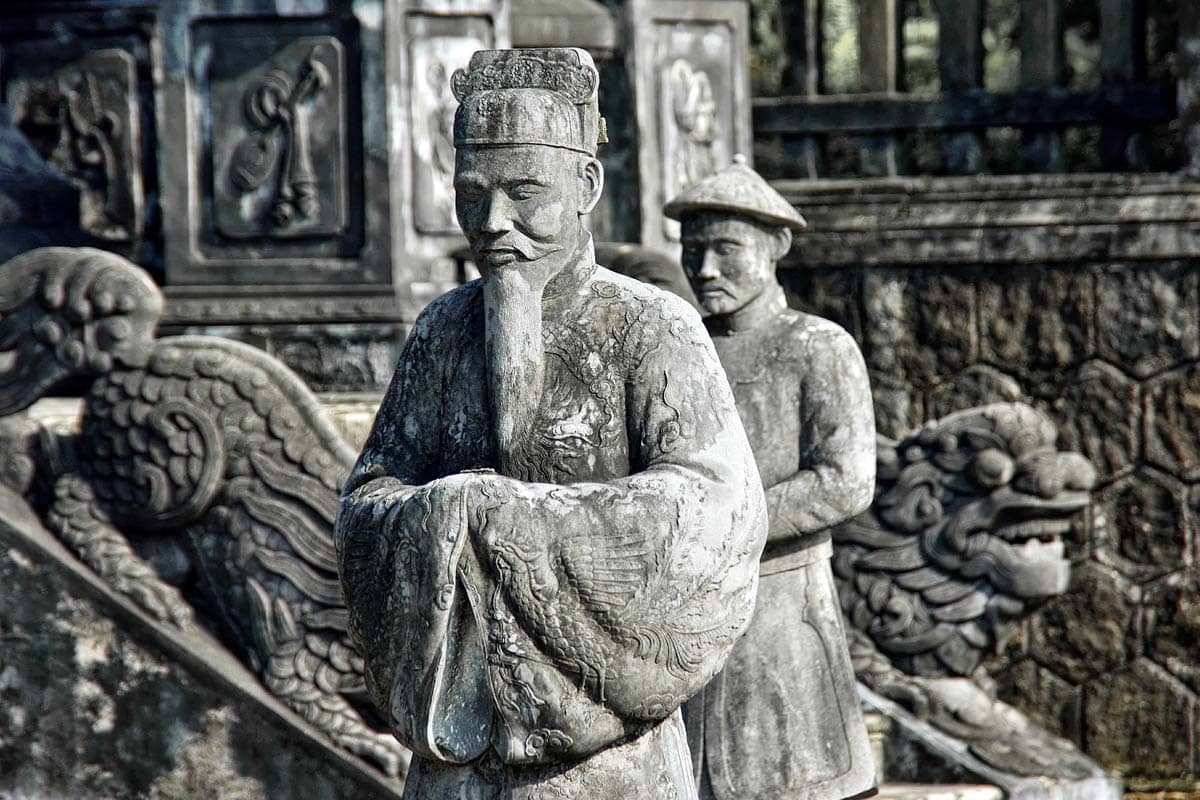
Another top attraction in imperial Hue is the Khai Dinh Tomb. Considered the most outstanding out of the three famous Hue Tombs (Minh Mang and Tu Duc), Khai Din was constructed in 1925 and took 11 years to be completed.
Blending Eastern and Western traditions in its architecture, the tomb is also home to many spectacular statues, including the biggest dragon monument in Vietnam.
Mui Ne Sand Dunes
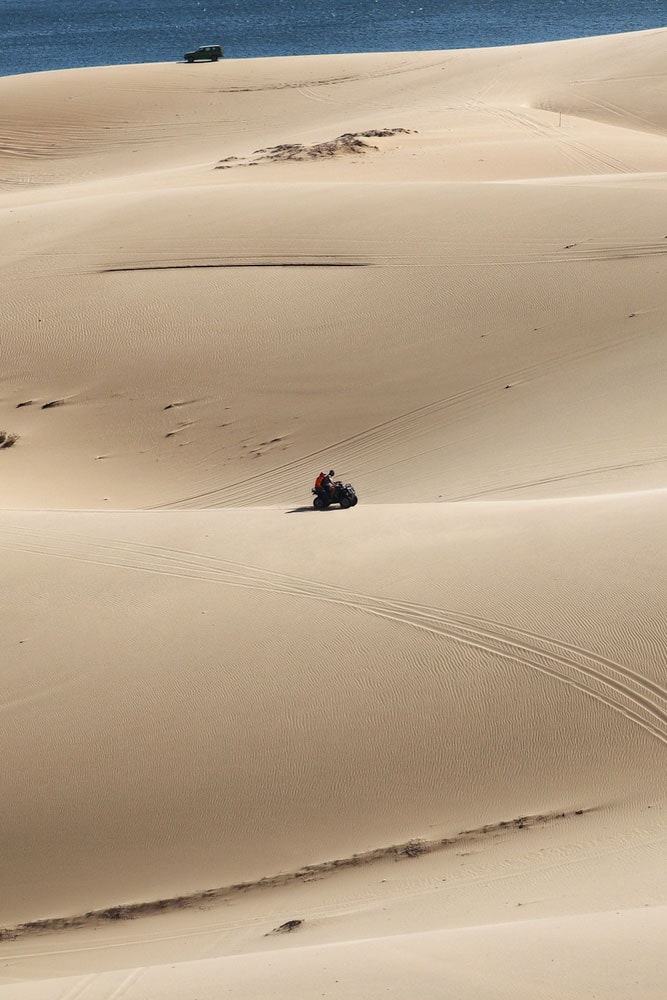
Talking about landmarks in Vietnam, we can’t skip Mũi Né. One of the most unusual places in the country that I bet most of you don’t even fathom exists.
You didn’t imagine Vietnam has a desert, didn’t you? Neither did I.
Situated about 230 kilometers away from Ho Chi Minh City, the small fishing village with 25,000 inhabitants gained a lot of tourist popularity due to its majestic sand dunes.
While powder-like sand dunes on a beach are not that rare, Mui Ne’s dunes are so spectacularly large that they create a small Sahara-like desert. Truly incredible!
See Also: Top 15 Landmarks the Philippines
The DMZ
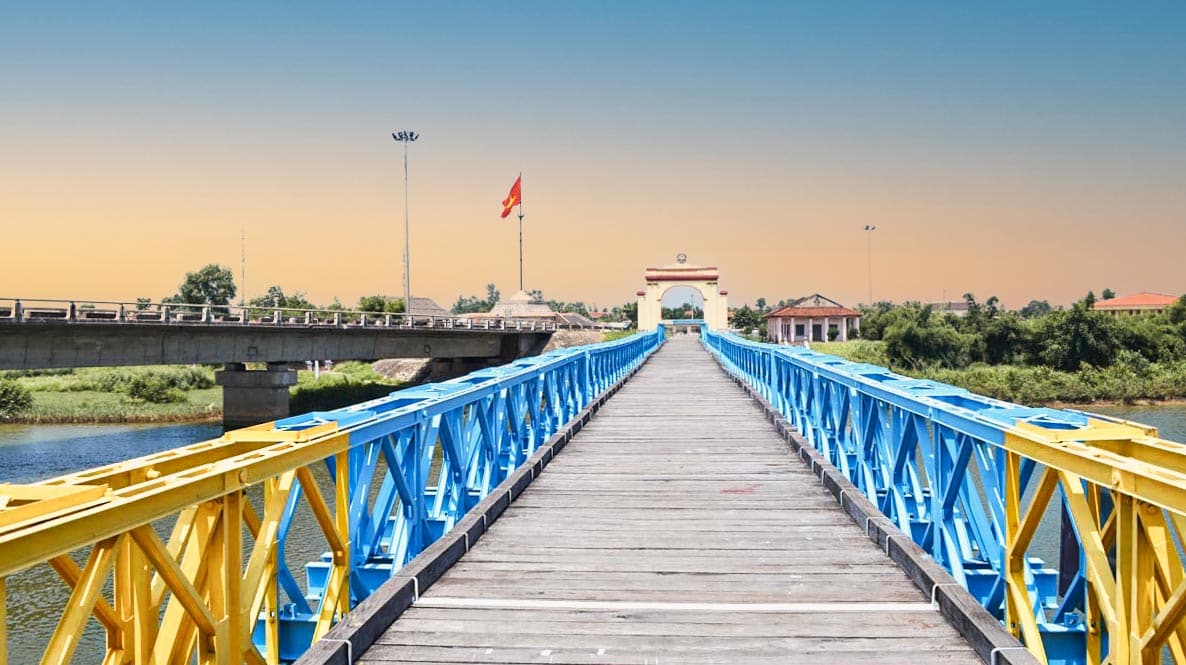
Not that visually spectacular but an integral part of Vietnam’s cultural heritage, the DMZ in Quang Tri is definitely an attraction that deserves its place on the list.
Set up in 1954, the zone marked the border of the former two separate parts of Vietnam – the communist North and the US-backed South. From 1954 to the 1970s, the zone was a particularly brutal battlefield that led to millions of casualties.
Today the town is often visited by war veterans, and the biggest attraction is the separation line on the multicolored Hien Luong Bridge.
Marble Mountains
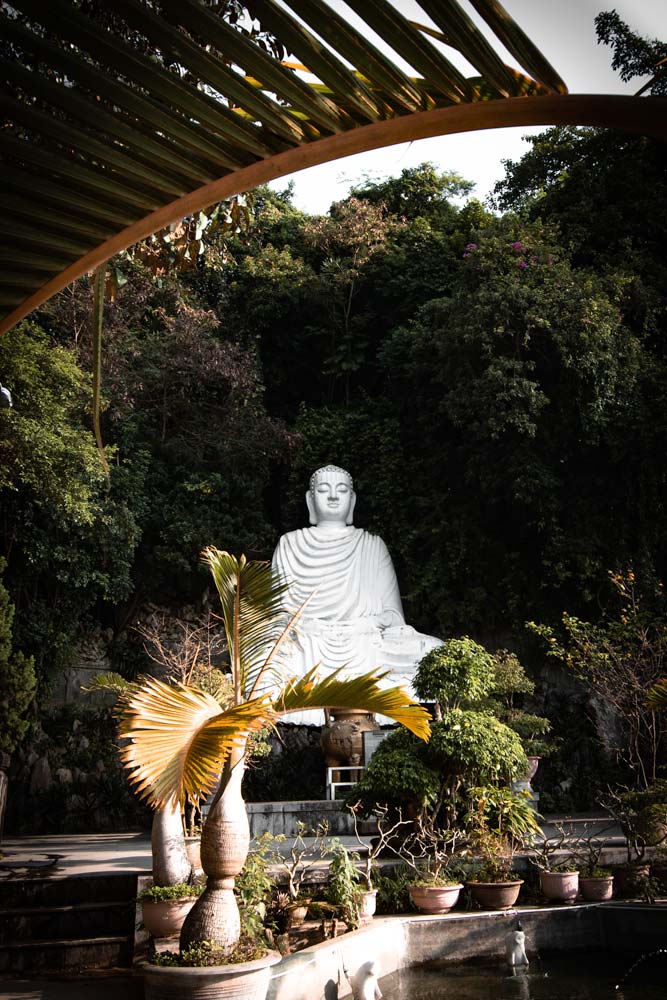
Sitting between Da Nang and Hoi An, the Marble Mountains are a must-have day-trip for any visitor of the two popular towns.
The legend says that a dragon laid an egg where the mountains are. The egg (somehow) hatched a girl while the five egg fragments became mountains.
The mountains themselves are made of limestone and marble and are more of a group of hills than real mountains. They are named after the five elements (earth, air, water, fire, and metal/gold) and house several temples, shrines, and caves.
My Son
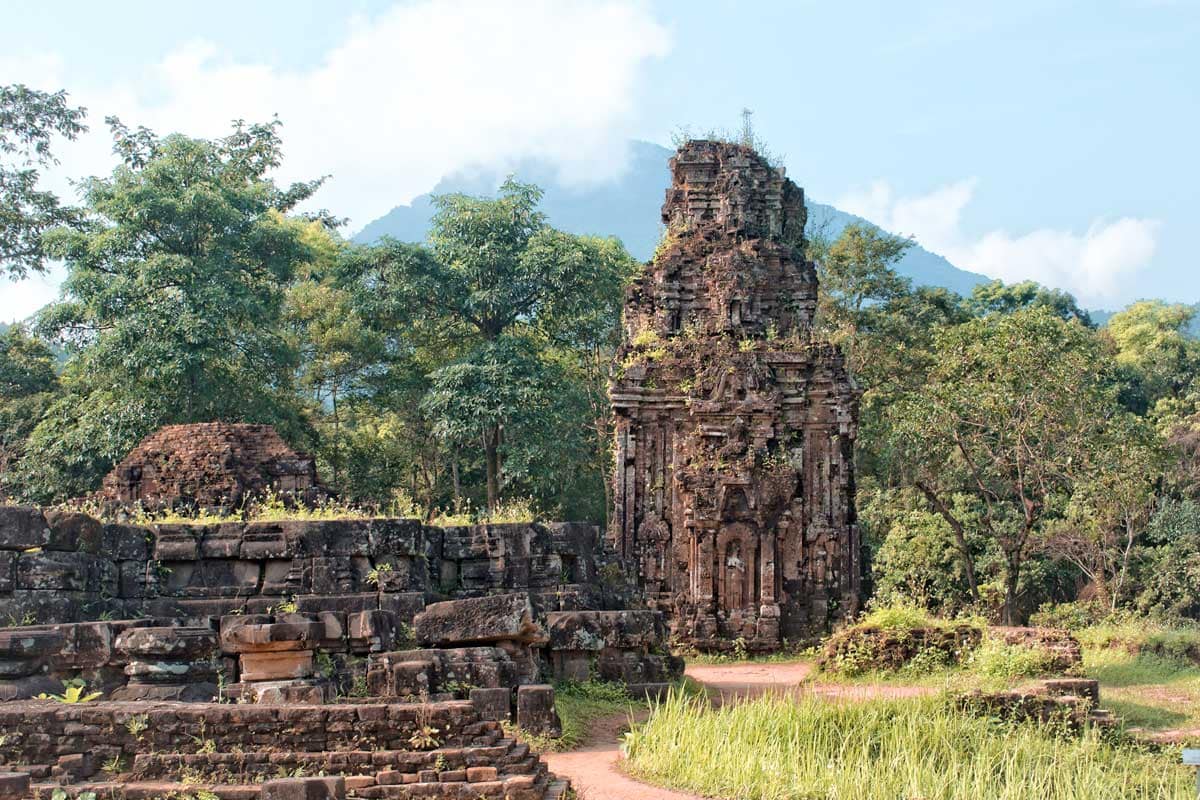
Just an hour away from Hoi An, Mỹ Sơn is a fascinating cluster of ancient Hindu temples. A UNESCO World Heritage Site since 1999, the temples are believed to be erected between the 4th and 14th centuries and worship Shiva.
Over the course of a thousand years, the kings of the ruling dynasties of Champa used the sacred temple site for various religious ceremonies.
Even though the Vietnam War destroyed a large amount of the My Son temples, the area that is considered the longest inhabited archaeological site in Indochina is still a spectacular treat for everyone fascinated by ancient history.
Temple of Literature
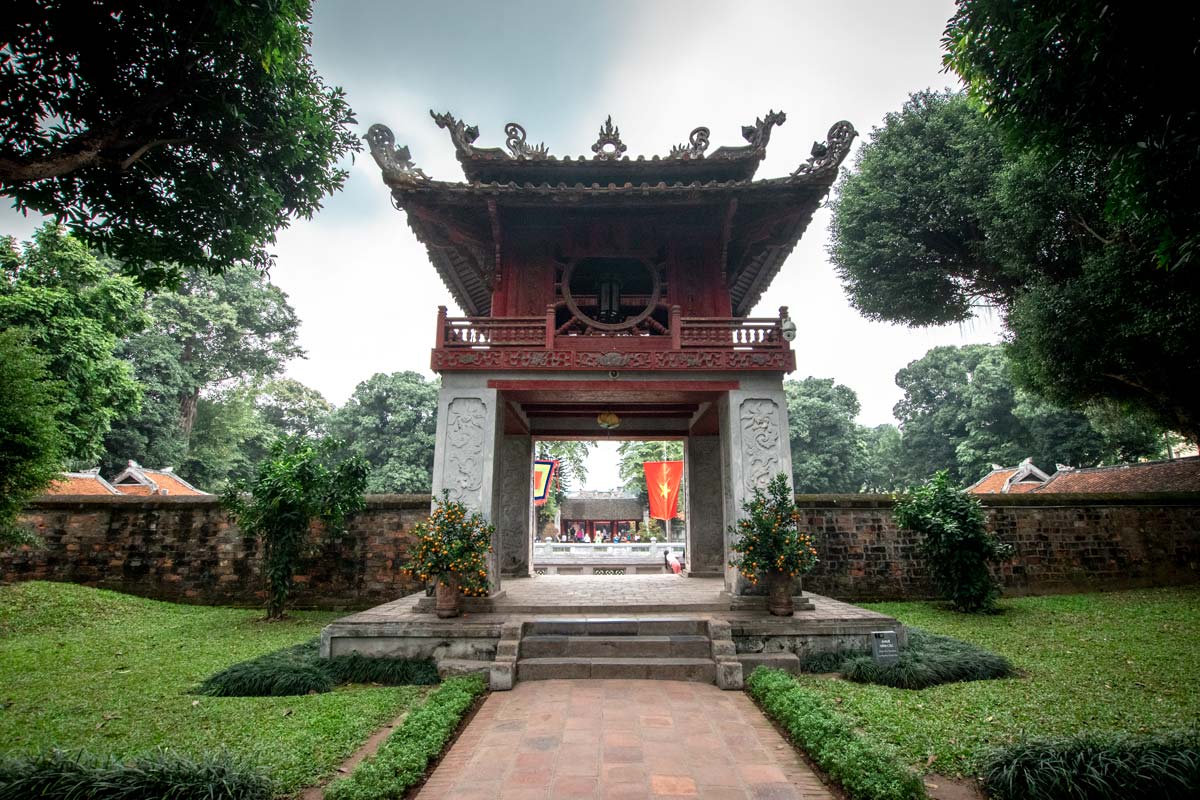
I just realized I almost finished the top landmarks in Vietnam without including a single functioning temple. Yes, Vietnam is a communist state, but they do have plenty of astonishing shrines.
Probably the most visited one is Hanoi’s Temple of Literature. Constructed in 1070 by Ly Thanh Tong, the third emperor of the Ly dynasty, the Confucian complex was also the first university in Vietnam.
Teaching the sons of the aristocracy and the mandarin from 1076 to 1915, the Temple of Literature may no longer be used for educational purposes, but it remains one of the most highly-rated attractions in Hanoi.
That’s all from me, I hope you enjoyed the biggest landmarks in Vietnam.
————————————
If you haven’t planned your trip there yet, find out how I plan my trips!
————————————
I have 12 bucket list ideas for Oceania. See my impossible bucket list of 1700+ adventures!
How many landmarks have you been to?
Some of the above are affiliate links and I will earn a percentage of the sale if you purchase through them at no extra cost to you. This helps keep my site running – so thanks in advance for your support!


